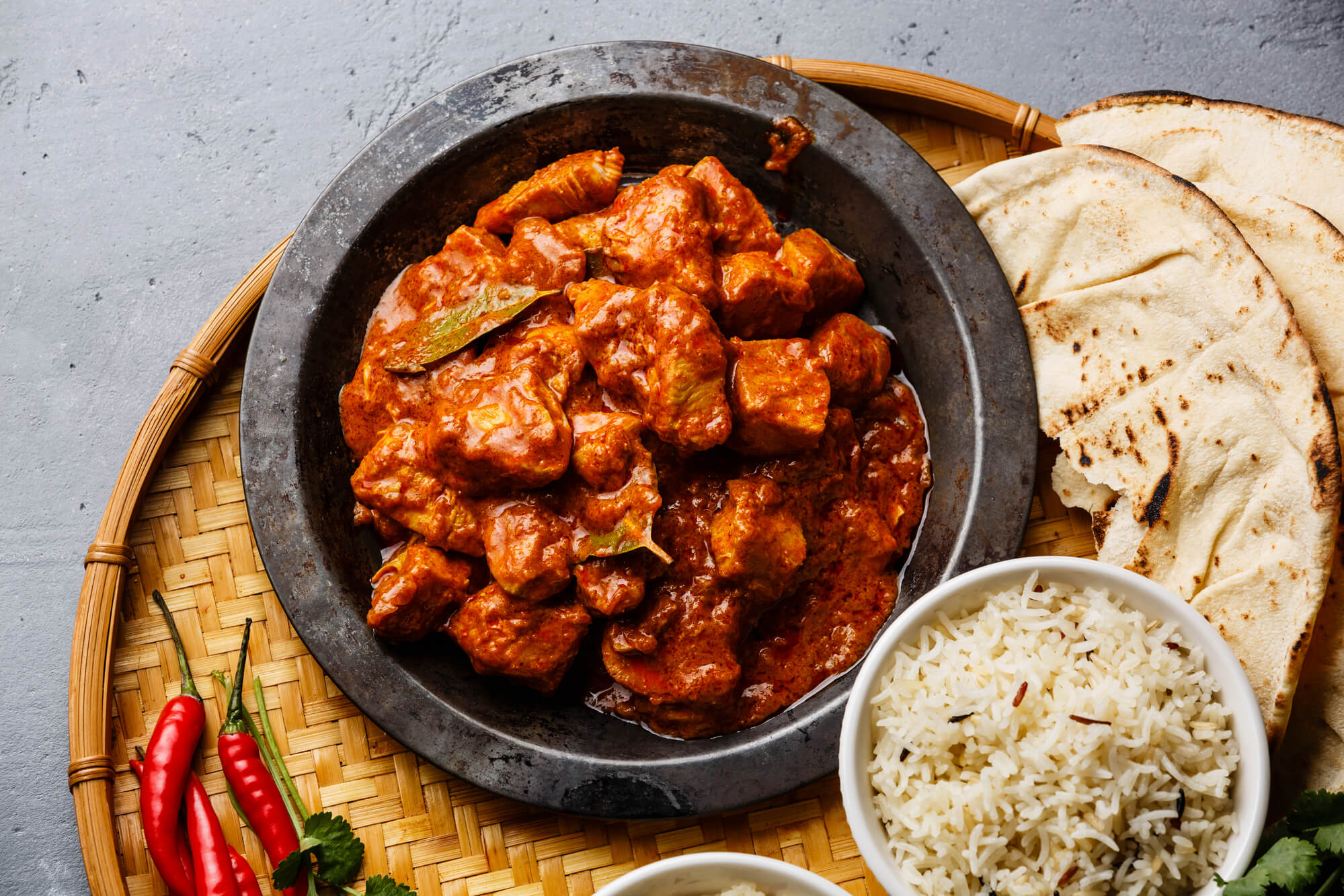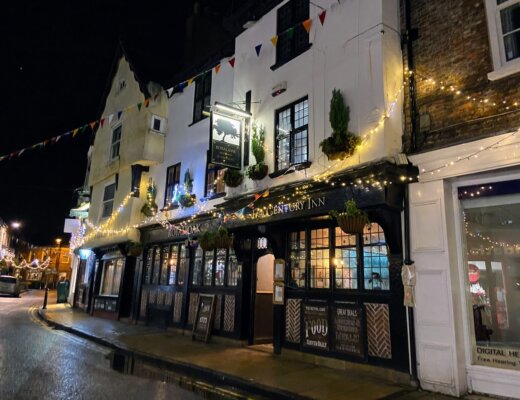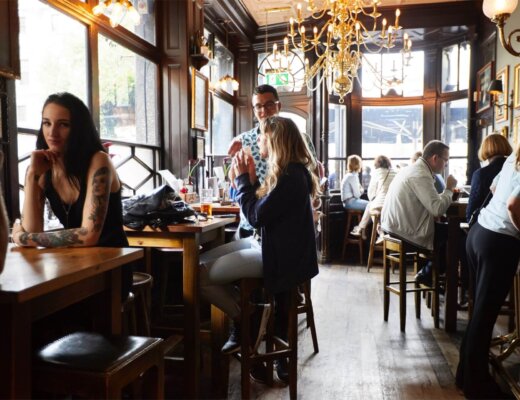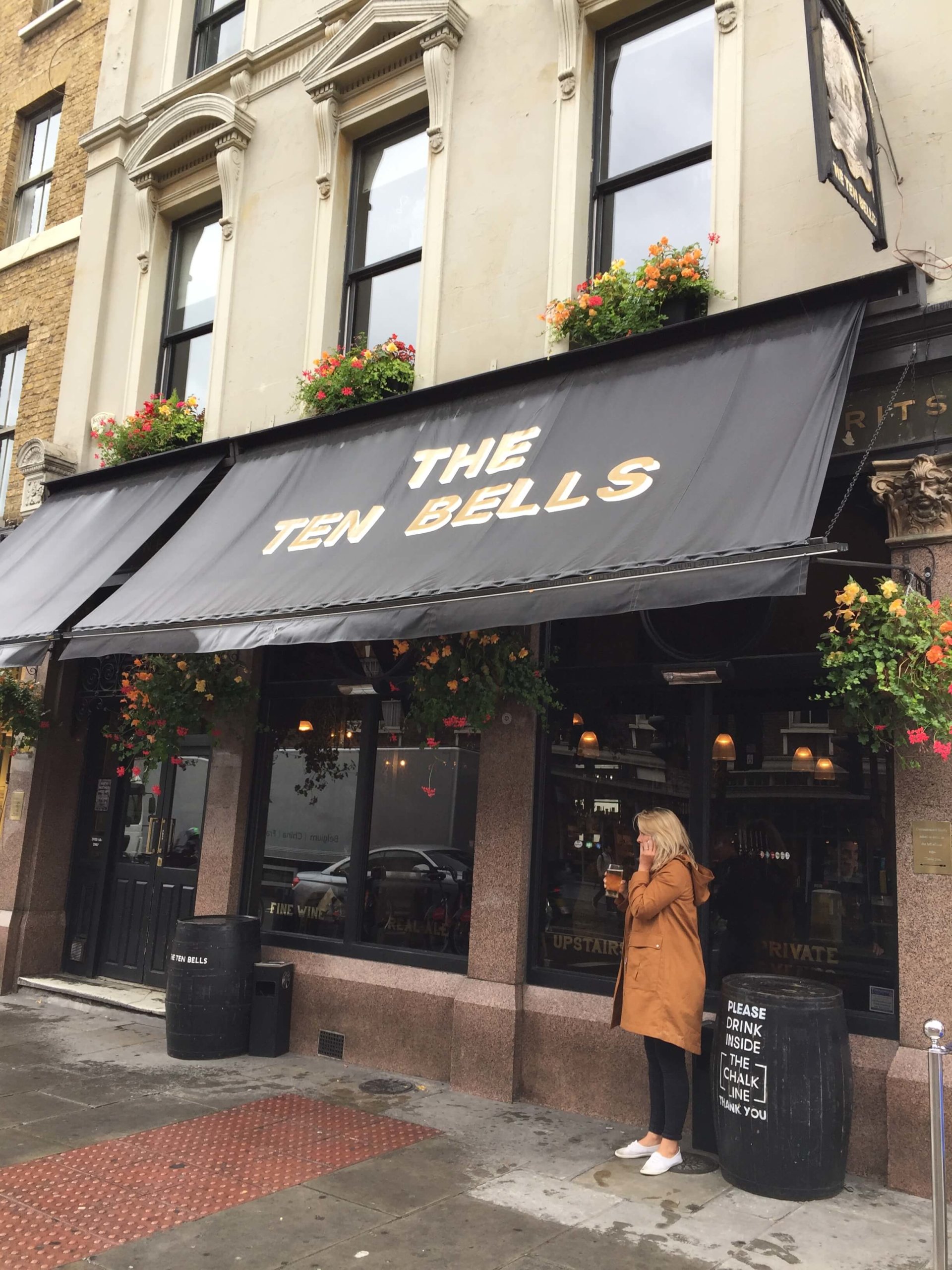The culinary history of England is a rich and diverse one, with influences from a variety of cultures and historical periods.
In the Middle Ages, the diet of the English was heavily influenced by the country’s agrarian economy. The majority of the population was engaged in farming, and as a result, the diet consisted mostly of bread, vegetables, and meat, with few spices. Fish was also an important part of the diet, especially for those living near the coast.
During the Renaissance, English cuisine began to incorporate more exotic spices and flavors, as a result of increased trade with the East. Sugar, a luxury item at the time, began to be used more frequently in cooking, and sweet desserts and pastries became more popular.
In the 17th and 18th centuries, the influence of French cuisine on England became more pronounced. The upper classes began to adopt French cooking methods and techniques, and French dishes such as roast beef, roast pork, and pâté became staples of the English diet.
During the 19th century, the Industrial Revolution led to changes in the way food was produced and consumed. The rise of factories and mass production made it possible to produce food on a large scale, and as a result, food became more affordable and accessible to the working classes. However, the quality of food often suffered, and the diet of the working classes was often limited and monotonous.
In the 20th century, the availability of food increased even further, and new technologies and transportation methods made it possible to import food from all over the world. The popularity of Indian and Chinese food also increased during this time, and these cuisines became an important part of the English diet.
Today, England is home to a vibrant and diverse culinary scene, with influences from a wide range of cultures and cuisines. Traditional dishes such as fish and chips and roast beef and Yorkshire pudding continue to be popular, and modern British cuisine often combines classic techniques with contemporary flavors and ingredients.
Dutch East India Company and the Spice Trade
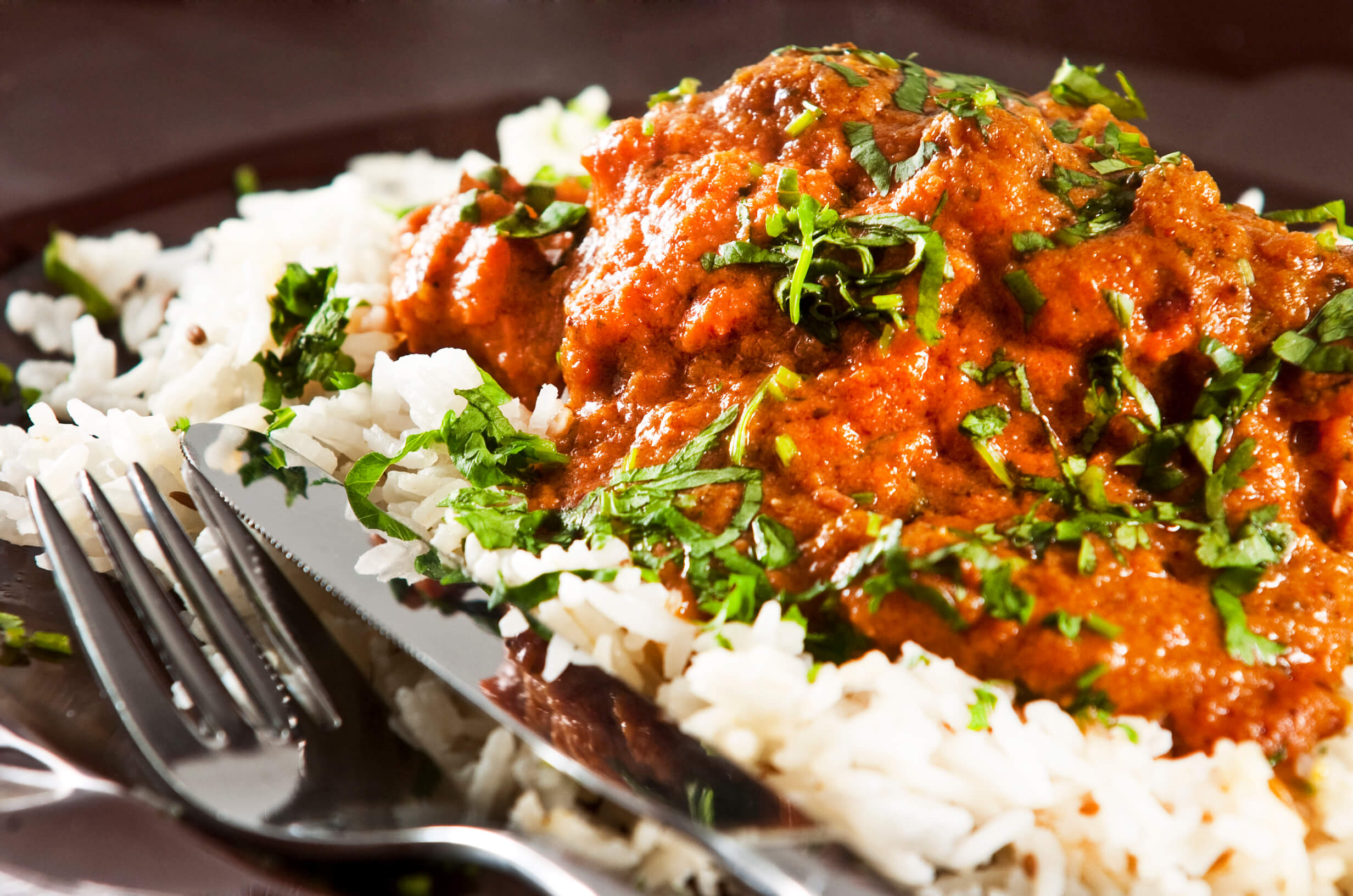
Chicken tikka masala served with rice and garnished with cilantro leaves
The Dutch-Indian spice trade had a significant impact on British cuisine, as it introduced a variety of new spices and flavors to the country. Prior to the arrival of Dutch traders in the 17th century, the British had limited access to exotic spices such as black pepper, nutmeg, and cinnamon, which were primarily grown in the East Indies. However, with the establishment of the Dutch East India Company (VOC) in 1602, the Dutch gained control of the spice trade in the region and began importing these spices to Europe on a large scale.
The Dutch-Indian spice trade brought a wealth of new flavors to British cuisine, which had previously been quite bland. Spices such as black pepper and nutmeg were used to season meats and stews, while cinnamon and cloves were used in sweet dishes and desserts. The use of spices also allowed for the preservation of food, which was particularly important in the days before refrigeration.
The impact of the Dutch-Indian spice trade on British cuisine was also evident in the popularity of new dishes such as curries, which were introduced to Britain by Indian traders and merchants. These dishes were heavily seasoned with a variety of spices and were typically served with rice. The popularity of curries in Britain increased during the 18th and 19th centuries and they eventually became a staple in British cuisine.
In addition to the introduction of new flavors and dishes, the Dutch-Indian spice trade also had an economic impact on Britain. As the demand for spices increased, the British began to establish their own trading routes to the East Indies, which led to the formation of the British East India Company in 1600. This company eventually came to rival the Dutch East India Company and played a major role in the colonization of India.
The Dutch-Indian spice trade also had a cultural impact on Britain as it helped to introduce new ideas, customs, and traditions. The use of spices in cooking, for example, was influenced by Indian and Southeast Asian cuisine, which led to a fusion of flavors and styles. This fusion of cultures can be seen in the popularity of dishes such as chutneys, which are a blend of Indian and British flavors.
As a result of this, English cuisine isn’t only traditionally British food. Perhaps the most well-known dish in the United Kingdom is Chicken Tikka Masala, a popular modern Indian dish. The dish was likely created in the UK by Indian chefs who adapted traditional Indian recipes to suit British tastes. It has become a staple dish in British Indian restaurants and has also become popular as a frozen meal and as a ready-made sauce in supermarkets. Additionally, the UK has a large South Asian population, and their cuisine has influenced the local food culture.
National Dishes of England
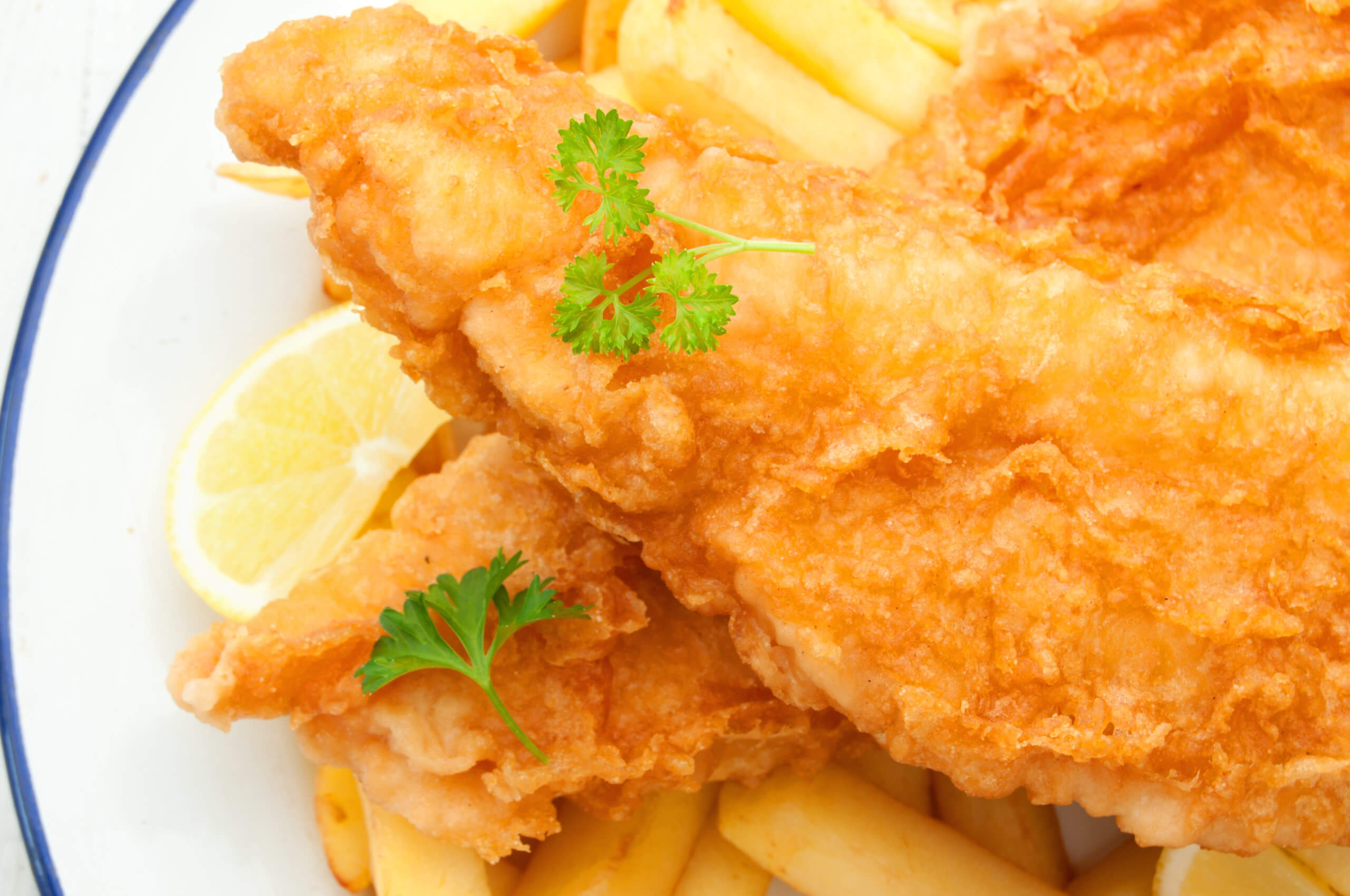
Two pieces of freshly fried fish with chips and a slice of lemon
Traditional British
England has a diverse and rich culinary history, with many traditional dishes that have become synonymous with the country. Some of the most well-known national dishes of England include:
Fish and Chips
Perhaps the most iconic of all English dishes, fish and chips is a classic meal that can be found throughout the country. It typically consists of deep-fried cod or haddock, served with chips (French fries) and a variety of toppings and condiments. The dish has its origins in the 19th century, when it was popularized by Jewish immigrants in London’s East End.
Roast beef and Yorkshire Pudding
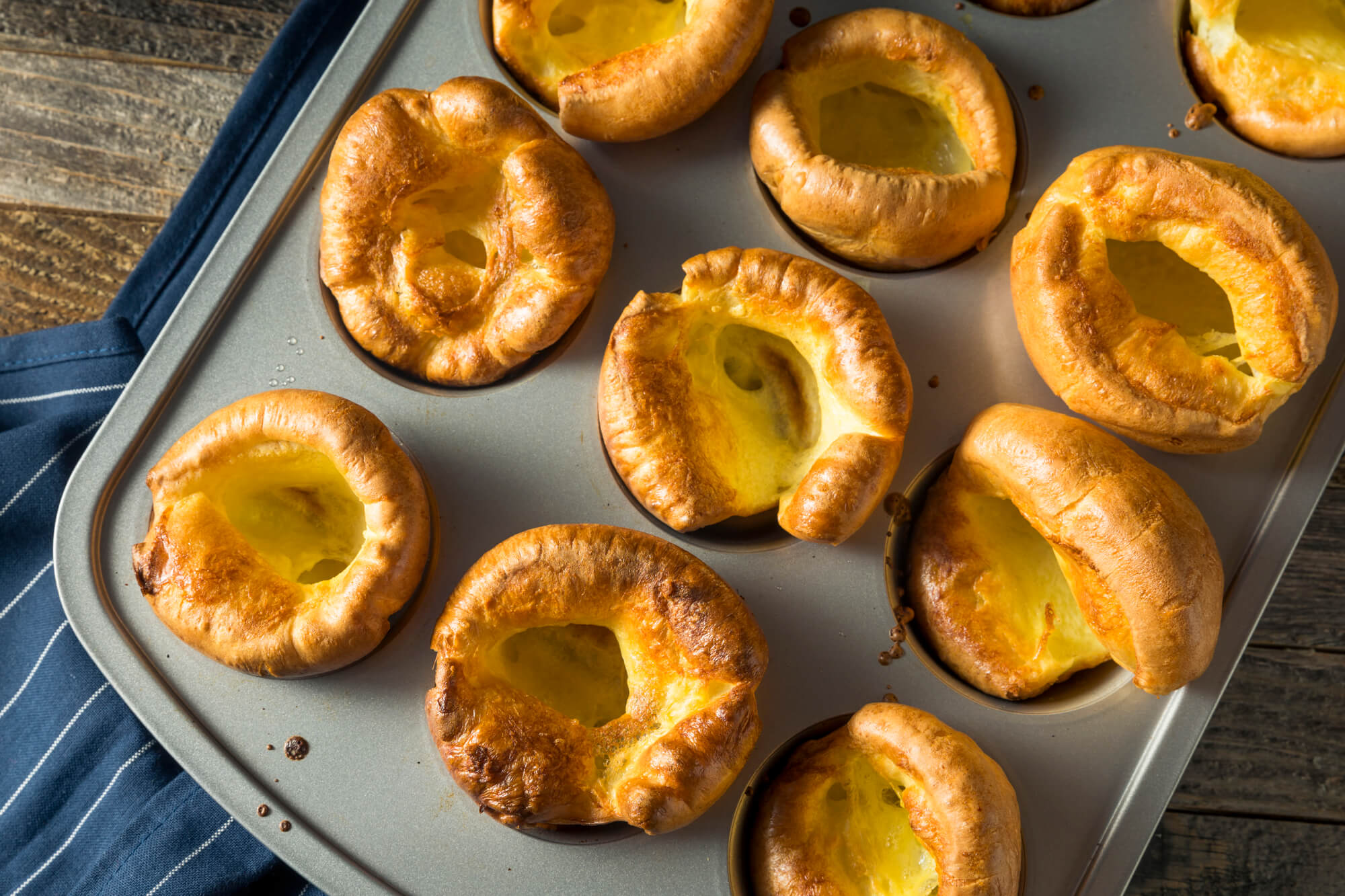
Warm Homemade British Yorkshire Puddings Ready to Eat
A traditional Sunday roast, roast beef is a staple of English cuisine. The meat is typically served with roasted potatoes, vegetables, and a gravy made from the meat juices. Yorkshire pudding, a light and fluffy batter pudding, is also served alongside the roast beef.
Shepherd’s Pie
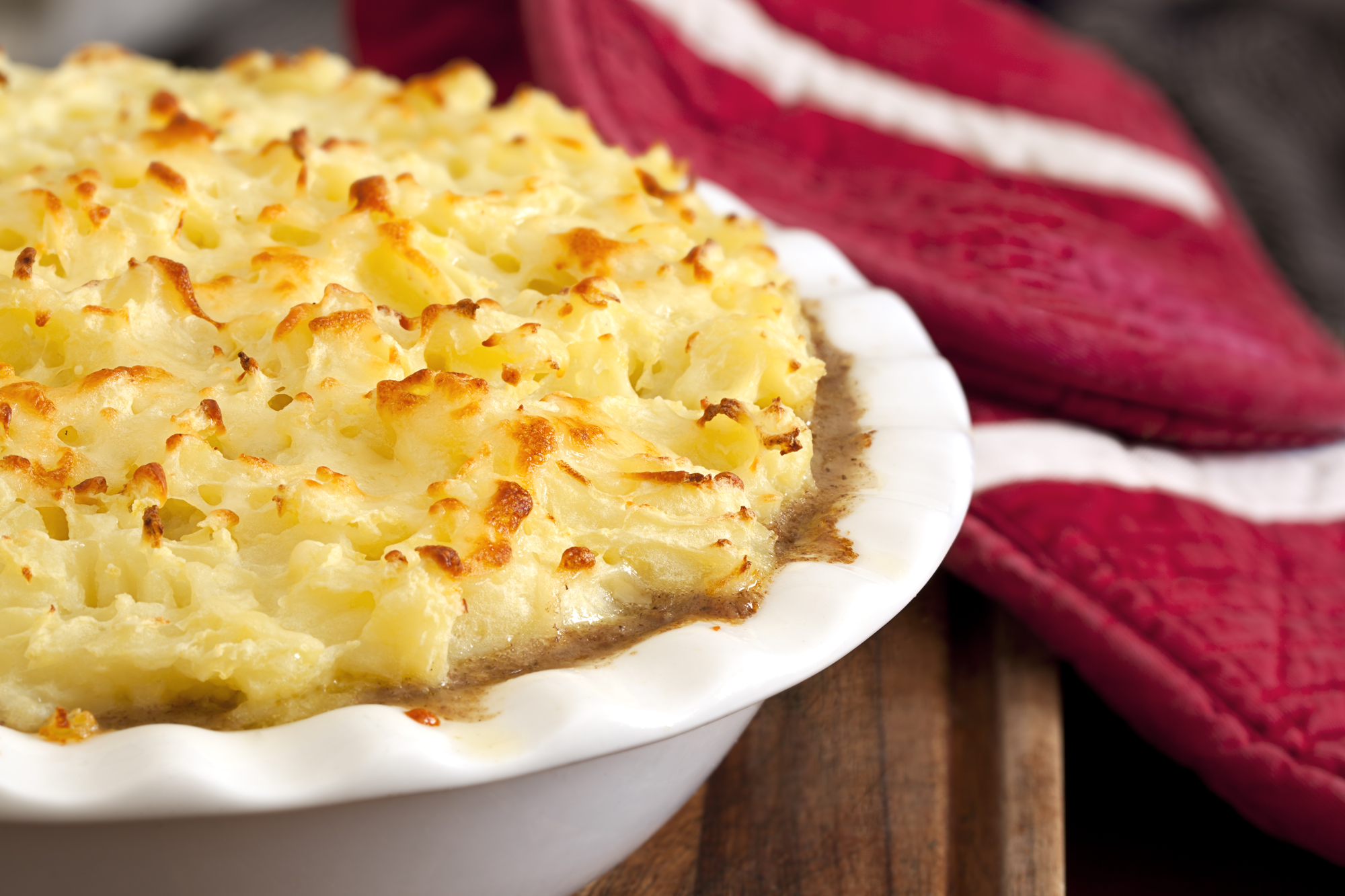
Shepherds pie, homemade ready for serving.
A hearty and comforting dish, shepherd’s pie is made with ground lamb or beef, vegetables, and a mashed potato topping. The dish is believed to have originated in the 18th century and is a popular choice for a comforting and warming meal.
Bangers and Mash
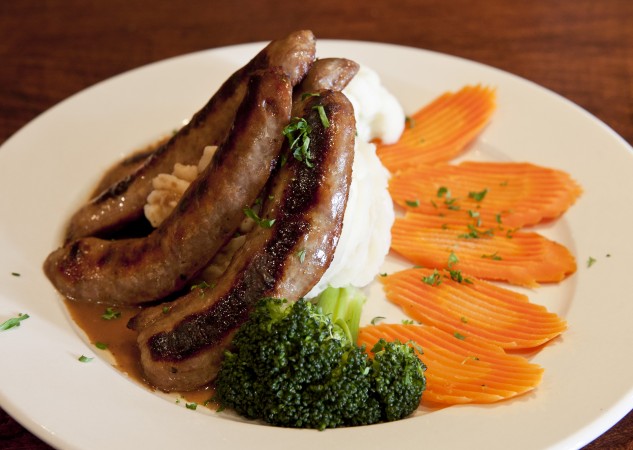
Another classic English dish, bangers and mash consists of sausages, typically pork, and mashed potatoes. The dish is often served with gravy and a side of peas or beans.
Ploughman’s Lunch
A traditional pub meal, the Ploughman’s lunch typically includes a selection of cheeses, bread, pickles, and butter. The dish is believed to have originated in the 1950s and is a popular choice for a light and simple meal.
Bubble and Squeak
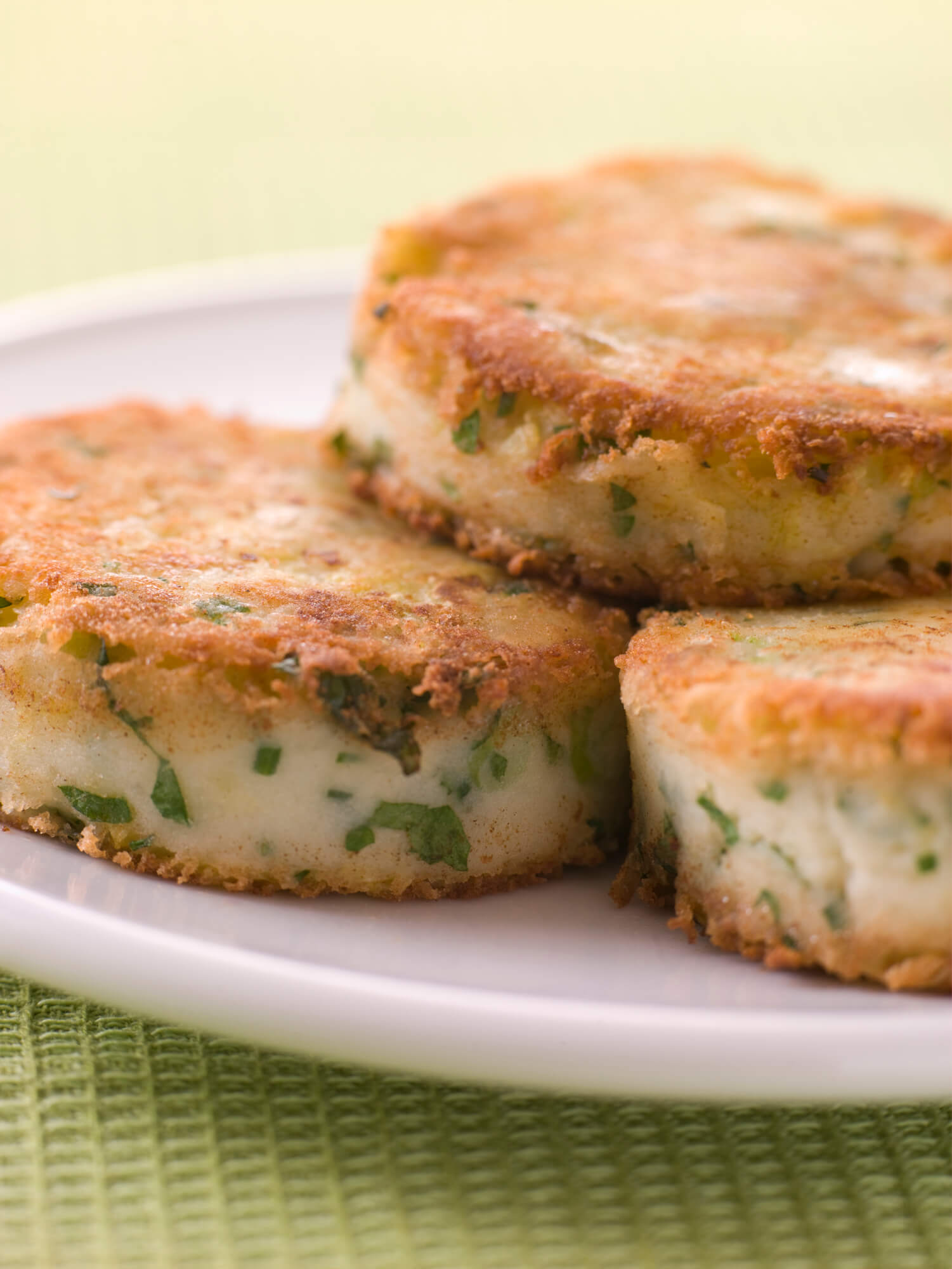
A dish usually made from leftover vegetables from a roast dinner, typically consisting of mashed potatoes and cabbage fried together. The name “bubble and squeak” comes from the sound the mixture makes when it is cooked.
Cottage Pie
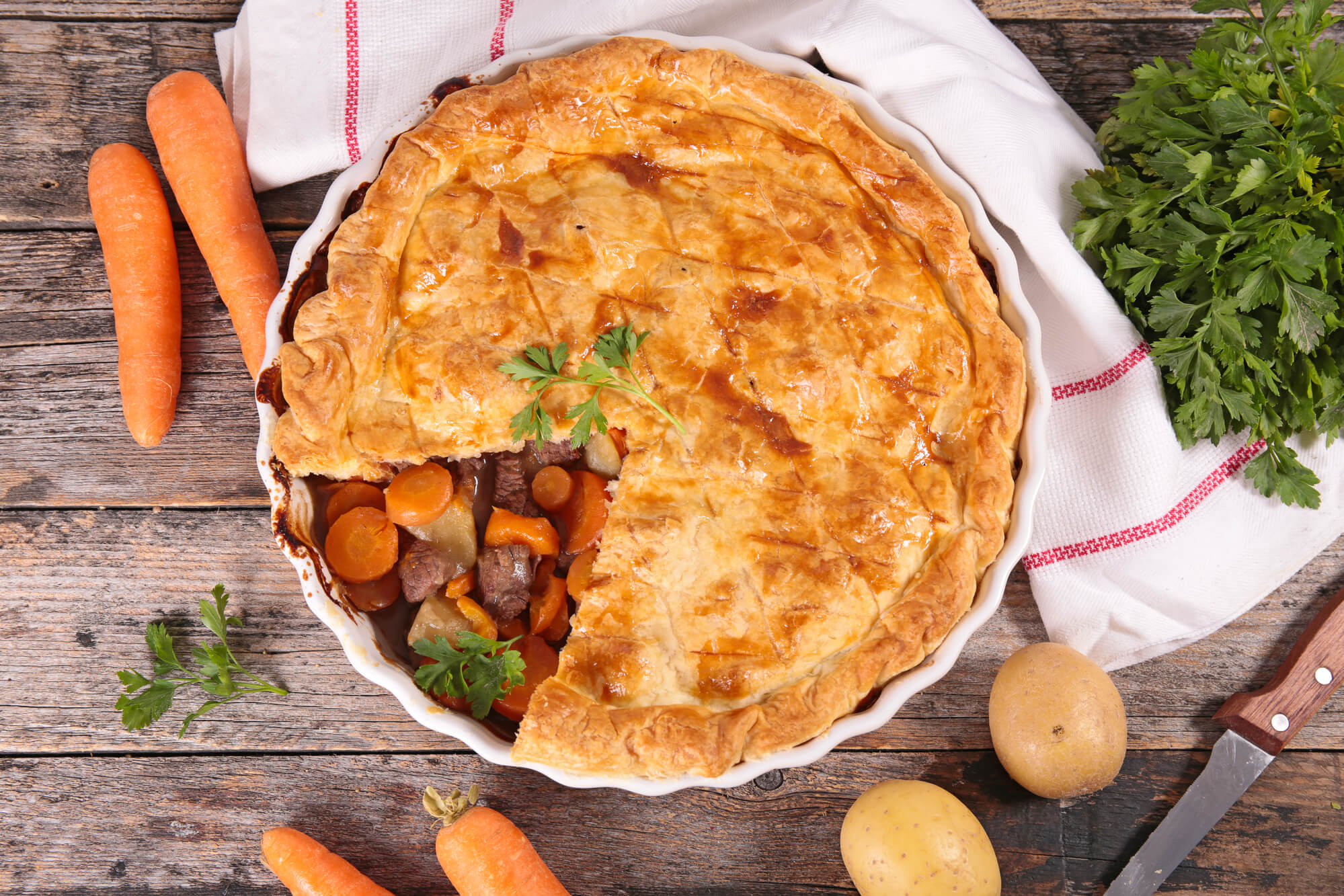
Beef and Vegetable Pie
Similar to Shepherd’s pie, but made with beef instead of lamb. Pies, in general, are a staple of British cuisine and company in an enormous variety.
Traditional English Breakfast
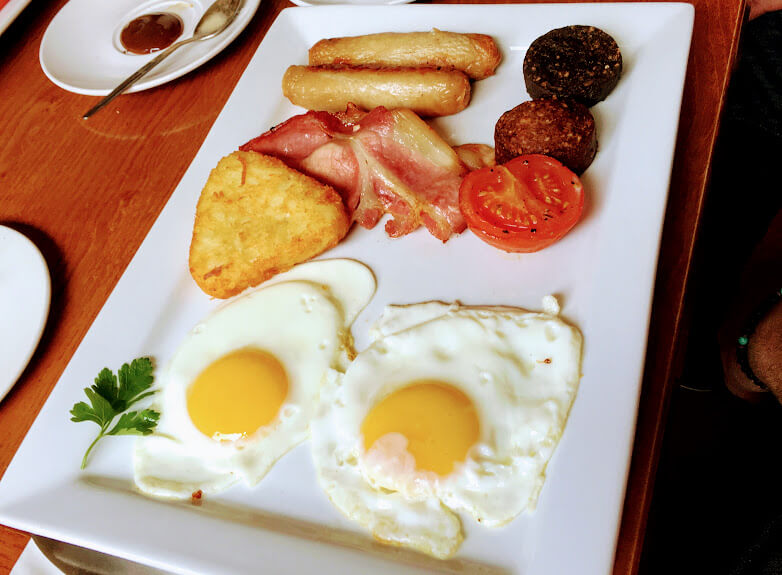
A full English breakfast typically includes bacon, sausages, eggs, beans, tomatoes, mushrooms, and black pudding (a type of sausage made from pig’s blood and oatmeal). It is usually served with toast and a pot of tea.
Trifle
A traditional English dessert typically made with layers of sponge cake, fruit, custard, and cream. The dish is believed to have originated in the 17th century and is a popular choice for a sweet and light dessert.
These are some of the most popular and well-known national dishes of England, but there are many other traditional dishes that are enjoyed throughout the country. Some of these include Cornish pasty, Lancashire hotpot, and Sticky toffee pudding. England’s culinary heritage is diverse and varied, and its traditional dishes continue to be enjoyed by people all over the world.
Indian-inspired Dishes of England
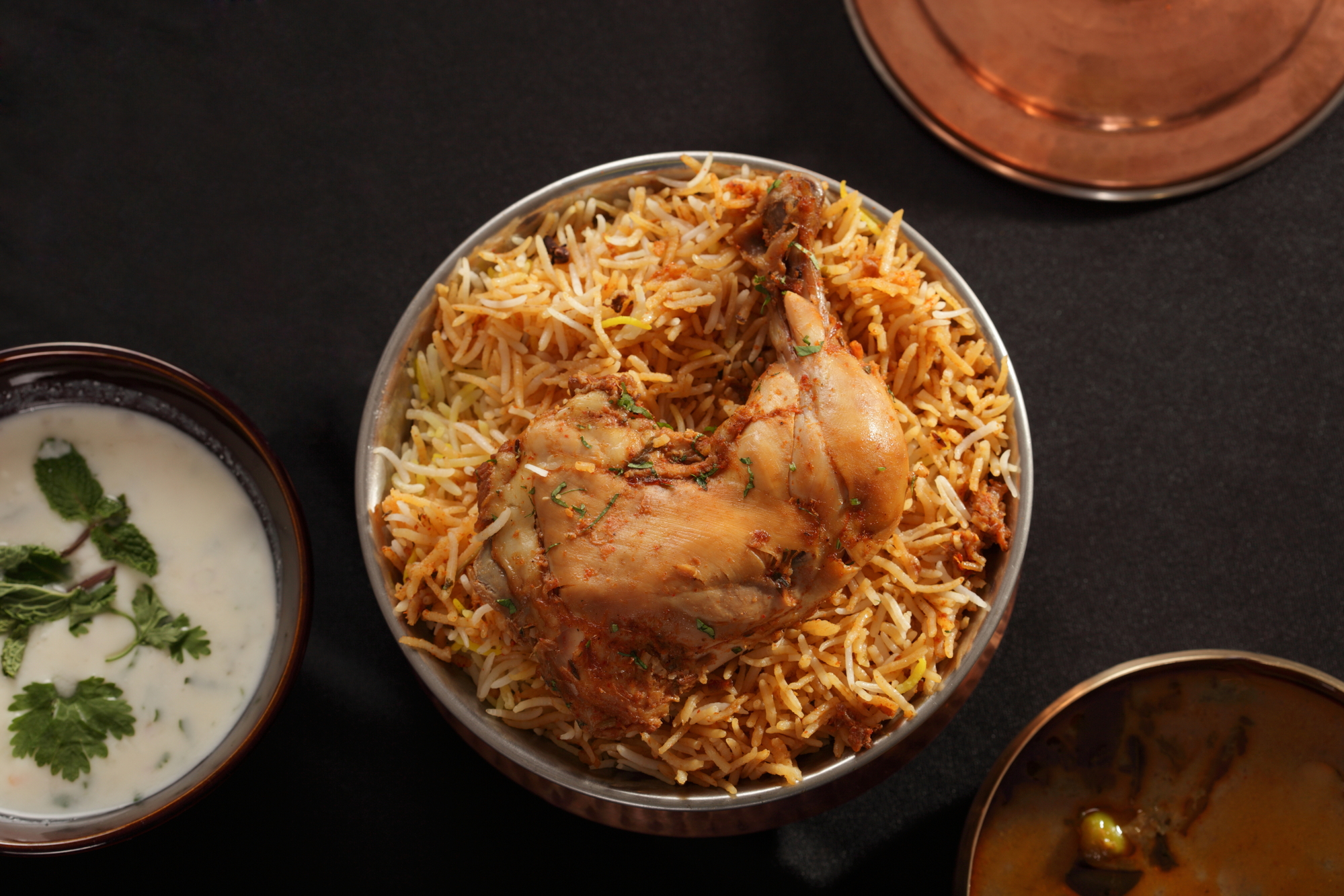
Hyderabadi Biryani – is perhaps the most well-known Non-Vegetarian culinary delights from the famous Hyderabad Cuisine. It is a traditional dish made using Basmati rice, goat meat and various other exotic spices.
Some of the popular Indian-inspired dishes that are popular in England include:
Chicken Tikka Masala
This dish is made by marinating chunks of chicken in a yogurt and spice mixture, then grilling them and cooking them in a creamy tomato-based sauce. It is often considered the national dish of England and is a favorite among both locals and tourists.
Biryani
This dish is a fragrant, flavorful and colorful rice dish that is often made with chicken, lamb or beef, and is often served with a side of raita (a yogurt-based sauce). It is a popular dish at Indian restaurants and is also often served at special occasions such as weddings and festivals.
Vindaloo
This dish is a spicy curry that is made with a paste of chili peppers, ginger, and garlic, and is often made with meat such as pork or lamb. It is a popular dish in England and is often served with a side of rice or naan bread.
Samosas
These are deep-fried triangular-shaped pastries filled with a variety of fillings such as potatoes, peas, or meat. They are a popular appetizer at Indian restaurants and are also often sold as a street food in England.
Tandoori Dishes
These dishes are cooked in a traditional clay oven called a tandoor. Popular tandoori dishes include tandoori chicken, lamb chops, and tandoori prawns. The high heat of the tandoor gives the food a unique smoky flavor and is a popular choice at Indian restaurants.
Dosa
This is a popular dish in South India that has become a staple in England, made with a fermented batter of rice and lentils, and is often filled with a variety of fillings such as potatoes, onions, and spices. It is often served with a side of sambar (a lentil-based stew) and chutney.
Paneer
This is a type of Indian cottage cheese that is often used in dishes such as paneer butter masala and saag paneer (spinach and paneer). It is a popular choice for vegetarians and is often served with naan or rice.
Naan
This is a type of Indian flatbread that is often made with yogurt, butter, or ghee and is often served as a side dish. It is a popular choice to accompany curries and is often used to scoop up the sauce of the dish.
Indian cuisine has become so popular in England that many British pubs and cafes also now offer Indian-inspired dishes, such as fish and chips with a curry sauce or a traditional English roast dinner with a side of samosas.
Best Food Cities in England
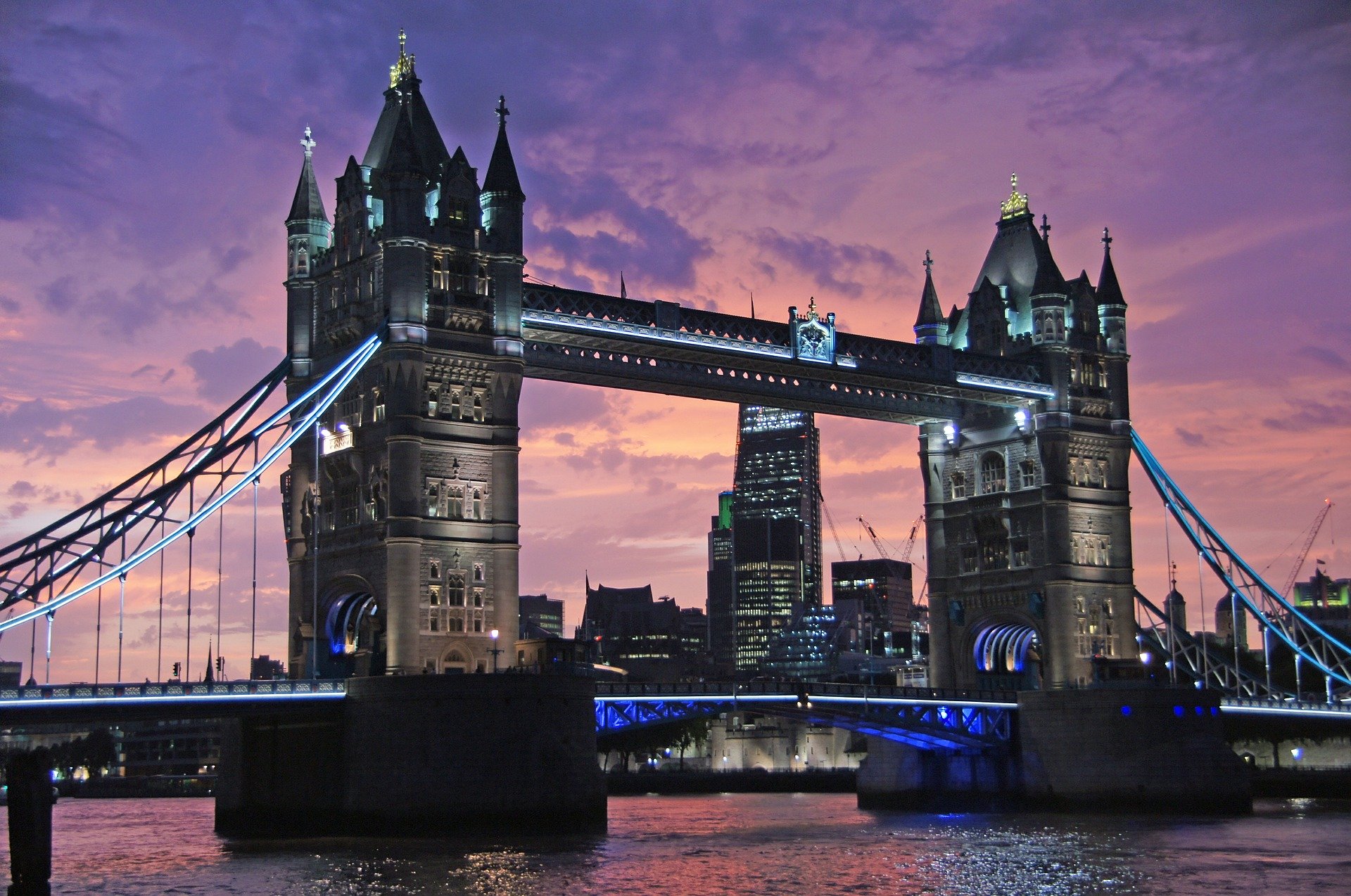
London is widely considered the food capital of England, and for good reason. The city is home to an incredibly diverse range of cuisines, from traditional British fare to exotic international dishes. From Michelin-starred restaurants to casual street food, there is something for every palate and budget. Some of the must-try food experiences in London include afternoon tea at The Ritz, dim sum in Chinatown, and fish and chips in a traditional East End pub. No matter what area of London you’re staying in, there’s absolutely no cuisine you can’t find in the city.
Regarding Michelin-starred restaurants, London has one of the highest volumes of restaurants with “stars” in the world – along with Los Angeles, New York, and the world-leader, Tokyo. Some of these Michelin restaurants include:
- The Ledbury: This Michelin two-starred restaurant is located in Notting Hill and is known for its modern French cuisine and impressive wine list. Chef Brett Graham’s menu focuses on seasonal ingredients and changes regularly.
- Gordon Ramsay’s Royal Hospital Road: This Michelin three-starred restaurant is located in Chelsea and is considered one of the best restaurants in London. Chef Gordon Ramsay’s menu features modern French cuisine and changes with the seasons.
- Rang Mahal: This Michelin starred restaurant is located in the City of London and serves contemporary Indian cuisine. Chef Atul Kochhar’s menu features a mix of traditional and modern dishes, and is known for its innovative flavors and impeccable presentation.
- L’Enclume: This Michelin two-starred restaurant is located in the Lake District and is known for its modern British cuisine. Chef Simon Rogan’s menu features seasonal ingredients and changes regularly.
- The Clove Club: This Michelin starred restaurant is located in Shoreditch and serves contemporary British cuisine. Chef Isaac McHale’s menu features a mix of traditional and modern dishes, and is known for its innovative flavors and impeccable presentation.
- St. John: This Michelin starred restaurant is located in Clerkenwell and serves traditional British cuisine with a focus on nose-to-tail eating. Chef Fergus Henderson’s menu features dishes made from offal and other cuts of meat that are often overlooked.
- Core by Clare Smyth: This Michelin starred restaurant is located in Notting Hill and serves modern European cuisine. Chef Clare Smyth’s menu features a mix of traditional and modern dishes, and is known for its innovative flavors and impeccable presentation.
Another top foodie city in England is Bristol. Known for its vibrant and creative food scene, Bristol offers a wide range of dining options, from trendy restaurants to cozy pubs. The city is particularly famous for its seafood, with a number of excellent seafood restaurants and seafood markets. Bristol is also home to a number of food festivals and events throughout the year, such as the Bristol Food Connections Festival, which celebrates the city’s vibrant food culture.
Brighton, a seaside town on the south coast of England, is another great destination for food lovers. The city is known for its fresh seafood, as well as its vibrant and eclectic food scene. From traditional fish and chips to trendy vegan and vegetarian restaurants, Brighton has something for every taste. The city also hosts a number of food festivals and events throughout the year, such as the Brighton Food Festival and the Brighton Seafood Festival.
Manchester, in the north of England, is another top foodie city. The city is known for its industrial heritage and its thriving arts and culture scene. Manchester is home to a number of excellent restaurants, from high-end fine dining to casual cafes and bistros. The city is also famous for its traditional “chippy” fish and chips, as well as its famous curry houses. Manchester also hosts a number of food festivals and events throughout the year, such as the Manchester Food and Drink Festival.
The city of Bath, a UNESCO World Heritage site in the south west of England, is a charming and historic city with a thriving food scene. Bath is home to a number of excellent restaurants and pubs, as well as a number of food festivals and events throughout the year, such as the Bath Food Festival. The city is particularly known for its traditional British cuisine, with a number of excellent pubs and restaurants serving classic dishes such as roast beef and Yorkshire pudding.
Finally, it is worth mentioning the city of Liverpool in the north west of England, known for its friendly locals, vibrant nightlife and rich cultural heritage. Liverpool has a diverse food scene that ranges from traditional pub grub to high-end fine dining, and also has a strong seafood tradition. Liverpool Food and Drink Festival is an annual event that takes place in September and is a great way to explore the city’s food scene.

